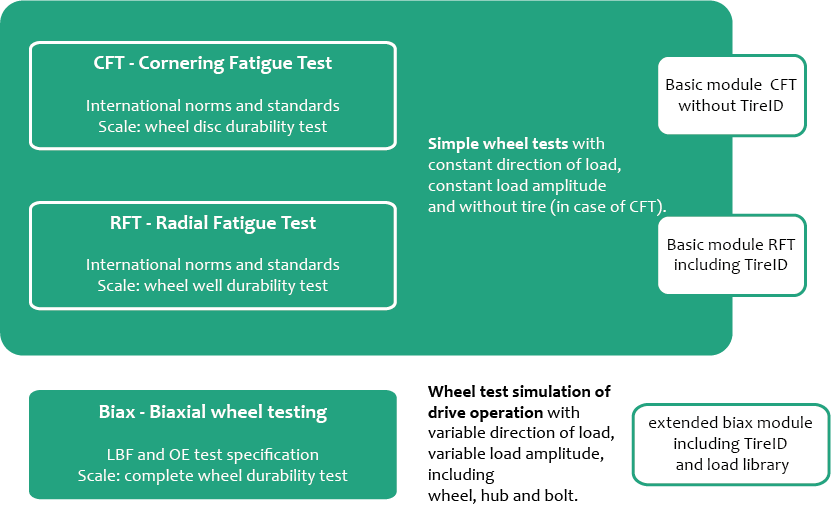Modules
Freely configurable modular design of the software!
What results does LBF®.WheelStrength deliver?
The FEM-based structural durability analysis is performed with LBF®.WheelStrength based on the conditions described, as well as details of static wheel load, tire dimensions, wheel material and manufacturing process in the form of a linear damage accumulation with S-N curves adapted for each individual wheel hub. The results of the numerical damage calculation are displayed as a
RFS value (Required Fatigue Strength). This discrete and colour-displayed value corresponds to the minimum required fatigue strength of the component and enables evaluation of the geometric design and the required quality of material and manufacturing process.
Biax
The “Biax” module works with real operational loads (variable amplitudes), thus a corresponding driving spectrum. It uses the same dimensioning method, which is also based on the experimental biaxial wheel and wheel hub test. In this respect the numerical results obtained with this module are comparable with the experimental test results of the biaxial wheel and wheel hub facility (
ZWARP).
For “Biax” the stress and marginal conditions are selected to produce calculated damage that is consistent with the relevant LBF load spectrum. The sum of the wheel load combinations corresponds to a load spectrum with an operational performance of 300,000 km for passenger cars and 500,000 for heavy commercial vehicles in typical conditions of use in Europe and/or comparable countries.

